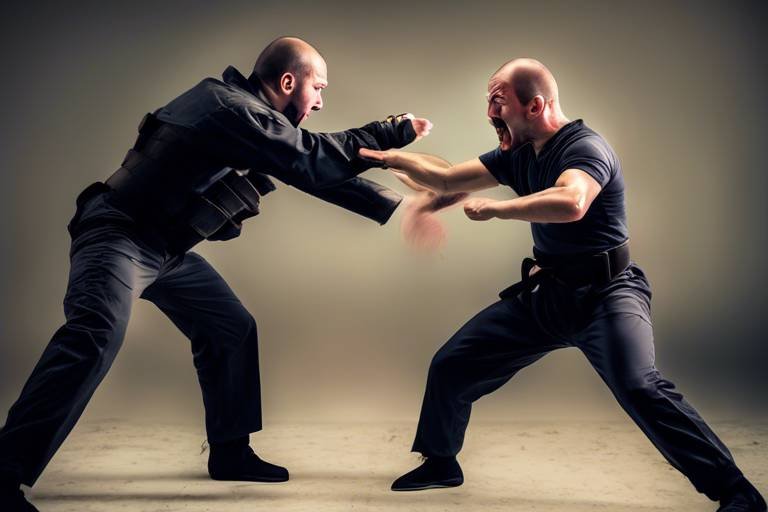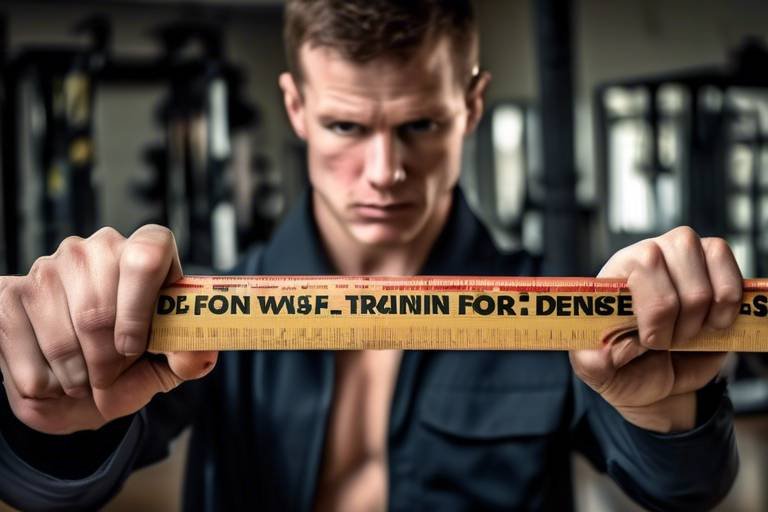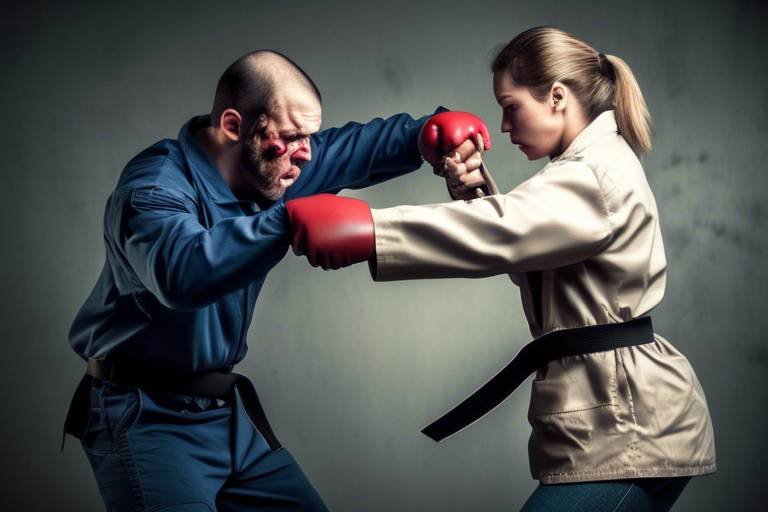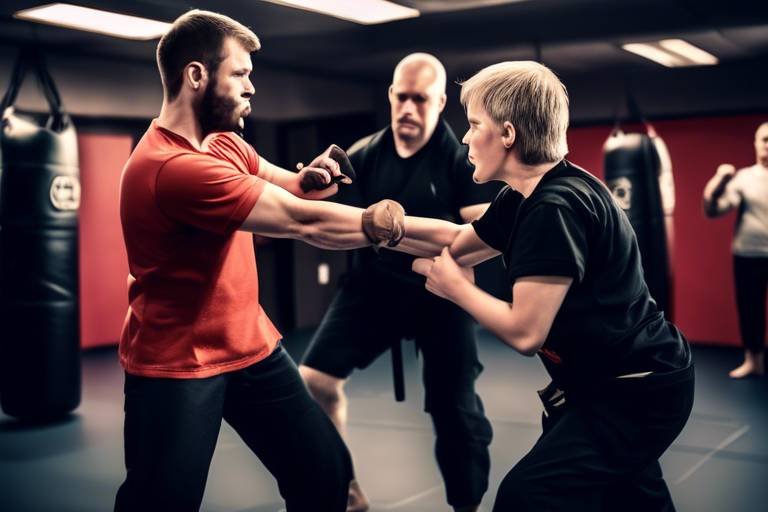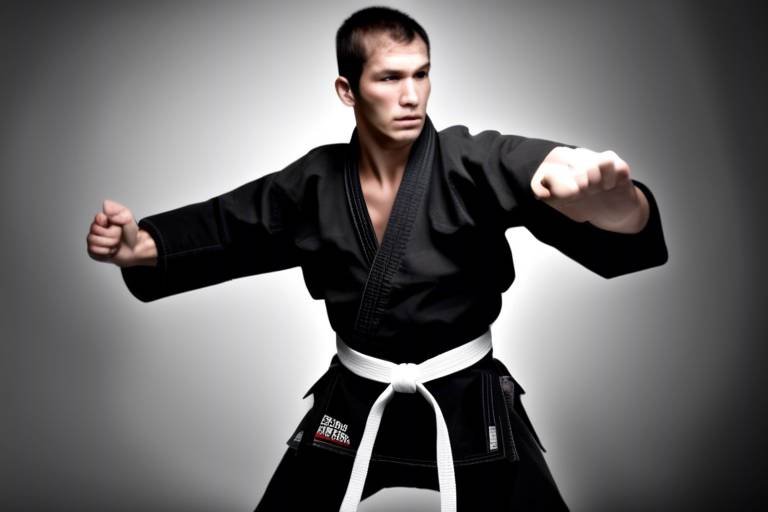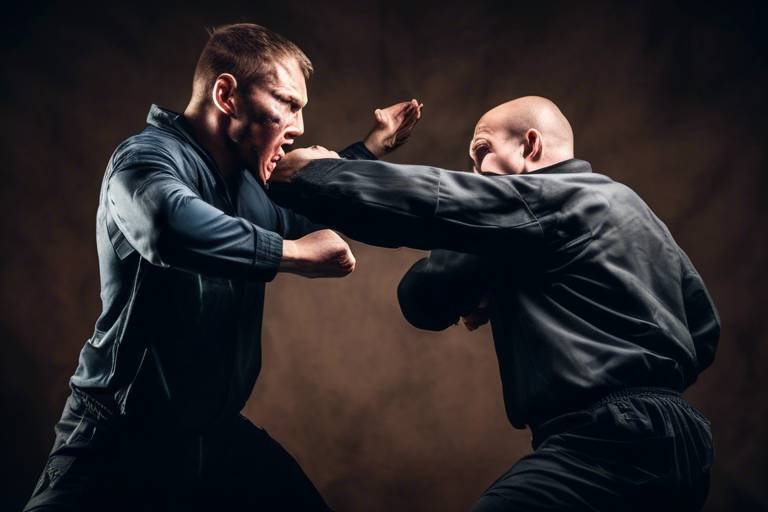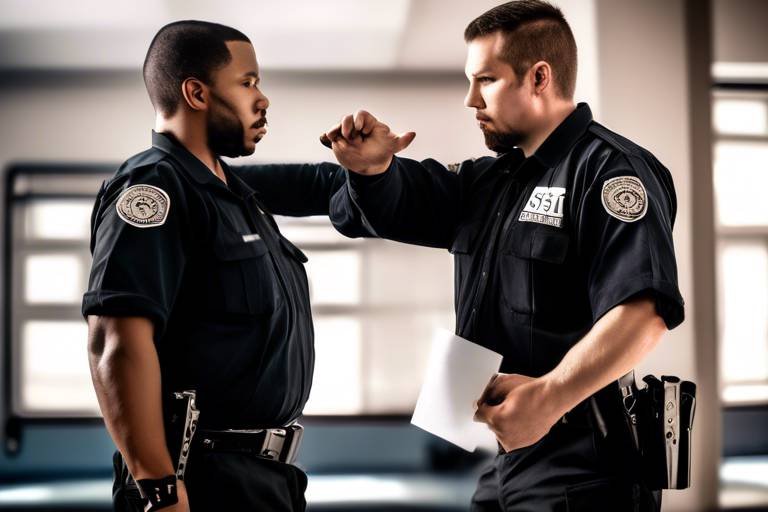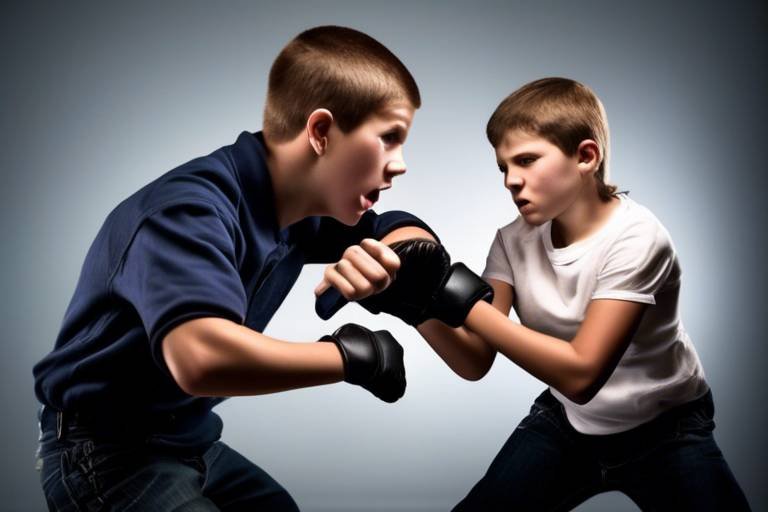How to React Quickly in a Self-Defense Situation?
In a world where unpredictability lurks around every corner, knowing how to react quickly in a self-defense situation can be the difference between safety and danger. Think of self-defense as your personal safety net; it’s not just about physical strength but also about mental agility and awareness. When faced with an unexpected threat, your body and mind must work in harmony to assess the situation, make swift decisions, and take action. But how do you prepare for such moments? Let’s dive into effective strategies that can empower you to respond decisively and effectively.
Self-defense is not merely a physical response; it is a legal right that permits individuals to protect themselves from harm. Understanding the principles and laws surrounding self-defense is crucial. In many jurisdictions, the law allows a person to use reasonable force to defend themselves against an imminent threat. However, this right comes with responsibilities. You need to know the boundaries of acceptable force and the legal implications of your actions. For instance, responding with excessive force could transform a self-defense situation into a legal battle. Always remember, the goal is to escape danger, not to escalate it.
Identifying potential threats is key to effective self-defense. It’s like being a detective in your own life; you must be vigilant and observant. Common signs of danger include aggressive body language, sudden movements, or a person invading your personal space. By assessing situations quickly, you can determine if action is needed. Are you in a crowded area where escape routes are limited? Is someone approaching you with an aggressive stance? Recognizing these cues can help you decide whether to confront the situation or retreat.
Being aware of your surroundings is your first line of defense. Imagine walking through a park; instead of being glued to your phone, take a moment to scan your environment. Situational awareness means being conscious of the people around you, their behaviors, and the overall atmosphere. Here are some tips to enhance your situational awareness:
- Keep your head up and make eye contact with those around you.
- Trust your instincts; if something feels off, it probably is.
- Stay sober and alert; substances can cloud your judgment.
By honing your situational awareness, you can prevent dangerous encounters before they escalate.
Understanding your environment can significantly influence your self-defense strategy. Consider factors like lighting, crowd density, and available escape routes. For instance, well-lit areas can deter potential threats, while dark corners can provide cover for an attacker. If you find yourself in a crowded place, think about how you can navigate through the crowd to safety. The more familiar you are with your surroundings, the better prepared you will be to react appropriately.
Reading body language is a vital skill in recognizing threats. Non-verbal signals can provide insights into someone's intentions. For example, crossed arms, clenched fists, or a tense posture can indicate aggression or hostility. On the flip side, open and relaxed body language usually signifies a non-threatening demeanor. By interpreting these cues correctly, you can gauge whether you need to take action or if the situation is benign.
Knowing how to respond immediately can make a significant difference in self-defense. When faced with an imminent threat, your reaction time is critical. Techniques such as creating distance, using your voice to assert yourself, or employing basic self-defense moves can be effective. Remember, your primary goal is to escape the situation safely. Here are some immediate response techniques to consider:
- Use your voice: Yelling can draw attention and deter an aggressor.
- Create space: If possible, put distance between you and the threat.
- Target vulnerable areas: If you must engage, aim for sensitive spots like the eyes, throat, or groin.
These techniques can buy you precious seconds to escape and seek help.
Sometimes, the most powerful weapon in your arsenal is your voice. Verbal de-escalation can diffuse a potentially violent situation before it escalates into physical confrontation. By using calm and assertive communication, you can influence the aggressor's behavior. It’s like trying to calm a storm; your demeanor can change the course of the encounter.
Maintaining a calm demeanor is crucial in high-pressure situations. Your tone, choice of words, and body language can all impact the outcome. For instance, speaking softly yet firmly can convey authority without provocation. Instead of shouting or using aggressive language, try to communicate clearly and respectfully. This approach can often lead to a peaceful resolution.
Establishing clear boundaries is another effective way to prevent escalation. Communicating your limits to potential aggressors can signal that you are not an easy target. Use assertive language to express your discomfort or refusal to engage. For example, saying “I need you to step back” can be a powerful statement. Remember, it’s about asserting your space without escalating the situation.
Q: What should I do if I feel threatened?
A: Trust your instincts. If you feel unsafe, try to remove yourself from the situation and seek help if necessary.
Q: Is it legal to use physical force in self-defense?
A: Yes, but the force must be reasonable and proportional to the threat faced. Always understand the laws in your area.
Q: How can I improve my situational awareness?
A: Practice being mindful of your surroundings. Limit distractions like your phone and engage with your environment.

Understanding Self-Defense
Self-defense is more than just a physical response to an attack; it is a legal right that allows individuals to protect themselves from harm. Understanding the principles and laws surrounding self-defense is crucial for anyone who wants to ensure their safety and the safety of others. In many jurisdictions, the law recognizes that individuals have the right to defend themselves against imminent threats, but this right comes with responsibilities. It is essential to know when you can legally act and the extent to which you can go to protect yourself.
In essence, self-defense can be broken down into two main components: justification and proportionality. Justification refers to whether the threat you are facing is genuine and imminent, while proportionality means that your response must be appropriate to the level of threat. For instance, if someone is verbally threatening you but not physically attacking, using deadly force in response would likely be considered an excessive reaction. Conversely, if an individual is physically assaulting you, a stronger response may be justified.
It's also important to note that self-defense laws can vary significantly from one place to another. Some areas have "stand your ground" laws that allow individuals to use force without retreating, while others may require you to first attempt to escape the situation. Familiarizing yourself with the specific laws in your area can prevent legal complications later on. Here’s a quick overview of common legal principles associated with self-defense:
| Legal Principle | Description |
|---|---|
| Imminent Threat | The threat must be immediate and unavoidable. |
| Proportionality | Your response must match the level of threat faced. |
| Duty to Retreat | In some jurisdictions, you must attempt to escape before using force. |
| Defense of Others | You may act to protect another person who is in imminent danger. |
Understanding these principles not only empowers you to make informed decisions in critical situations but also helps you navigate the aftermath of an incident. Remember, the goal of self-defense is not to seek revenge but to create an opportunity for escape or to seek safety. As you become more aware of your rights and responsibilities, you’ll find that knowledge itself can be a powerful tool in self-defense.

Recognizing Threats
When it comes to self-defense, the first line of protection is your ability to recognize threats. This means being vigilant and aware of your surroundings, as well as understanding the signs that indicate a potential danger. It’s not just about the obvious threats, like someone approaching you aggressively; it’s also about the subtler cues that can signal something is off. Think of it as being a detective in your own life, constantly looking for clues that might suggest trouble is brewing.
One of the most important aspects of recognizing threats is understanding the common signs of danger. These can include:
- Unusual behavior: If someone is acting erratically, it could be a sign that they are not in control of themselves.
- Body language: Crossed arms, clenched fists, or a tense posture can indicate hostility.
- Proximity: If someone is invading your personal space without a clear reason, it’s time to be cautious.
But how do you assess situations quickly? It’s all about situational awareness. This is the practice of being conscious of what’s happening around you. It’s akin to being a hawk, soaring high above, scanning the ground for any signs of movement that could indicate danger. To enhance your situational awareness, consider the following:
- Stay off your phone: It’s easy to get distracted by technology, but being engrossed in your screen can blind you to potential threats.
- Observe your surroundings: Take a mental note of exits, people around you, and anything that feels out of place.
- Trust your instincts: If something feels wrong, it probably is. Your gut feeling is often your best ally.
Another crucial element in threat recognition is understanding environmental factors. The context of your surroundings can significantly influence your safety. For instance, poorly lit areas can create opportunities for danger, while crowded places might offer safety in numbers. Here are some environmental factors to consider:
| Factor | Implication |
|---|---|
| Lighting | Poor lighting can conceal threats, making it harder to assess danger. |
| Crowd Density | A dense crowd may provide cover but can also make it easier for someone to blend in. |
| Escape Routes | Knowing your exits can be crucial in a threatening situation. |
Lastly, let’s talk about body language cues. Understanding non-verbal signals can give you a significant advantage in recognizing threats. For example, if someone is approaching with an aggressive stance, or if their facial expressions indicate anger, these are strong indicators that you should be on high alert. Just like a skilled actor can convey emotion without saying a word, a person can reveal their intentions through their body language. Pay attention to:
- Facial expressions: Angry or hostile expressions can be a precursor to aggression.
- Posture: A relaxed posture may indicate no threat, while a rigid posture can be a warning sign.
- Gestures: Quick, erratic movements can signal a potential attack.
In summary, recognizing threats is about being aware, observant, and intuitive. It requires practice and a keen eye for detail. By honing your ability to spot danger, you’re not just preparing yourself for a potential confrontation; you’re empowering yourself to navigate the world with confidence and safety. So, the next time you step out, remember to be that hawk in the sky, always on the lookout for signs that could lead to a safer outcome.

Situational Awareness
is like having a sixth sense; it’s the ability to perceive your environment and understand what’s happening around you. Imagine walking through a crowded market, and instead of just focusing on your shopping list, you’re also aware of the people around you, their movements, and the general atmosphere. This heightened awareness can be your first line of defense against potential threats. It’s about being proactive rather than reactive, which can make all the difference in a self-defense situation.
Being aware of your surroundings can prevent dangerous encounters before they even happen. Think of it as a mental radar that helps you pick up on cues that might indicate trouble. For instance, if you notice someone acting suspiciously, it gives you the chance to change your course or prepare yourself mentally for a possible confrontation. But how do you cultivate this essential skill?
First, practice active observation. This means not just looking but really seeing. Pay attention to details—who's around you, what they’re doing, and how they’re behaving. You might ask yourself questions like, "Does someone seem out of place?" or "Are there any exits nearby?" This kind of questioning keeps your mind engaged and alert.
Next, consider the environmental factors that can affect your awareness. For example, poor lighting can obscure potential threats, while a crowded area may make it difficult to see everything clearly. Here’s a quick table to illustrate how different environments can impact your situational awareness:
| Environment | Impact on Awareness |
|---|---|
| Well-lit area | Increased visibility, easier to spot threats |
| Crowded space | Obscured view, potential for confusion |
| Familiar surroundings | Higher comfort level, better awareness of exits |
| Unfamiliar territory | Higher vigilance required, more focus on surroundings |
Another crucial aspect is to recognize body language cues. Humans communicate a lot through non-verbal signals, and being able to read these can give you insights into someone’s intentions. For instance, if someone is clenching their fists or invading your personal space, these could be signs of aggression. By being aware of such signals, you can better prepare yourself to react appropriately.
Finally, remember that situational awareness isn’t just about the immediate moment; it’s also about anticipation. Try to think a few steps ahead. What could happen next? How would you respond? This mental rehearsal can help you feel more confident and prepared when faced with a threatening situation.
In conclusion, developing strong situational awareness is a vital skill for anyone looking to enhance their self-defense capabilities. It’s about being aware of your surroundings, recognizing potential threats, and preparing yourself mentally for any situation that might arise. So, the next time you step out, make it a habit to engage your senses and stay alert. After all, being aware is the first step towards staying safe.
- What is situational awareness? Situational awareness is the ability to perceive and understand the environment around you, helping you identify potential threats.
- How can I improve my situational awareness? You can improve your situational awareness by practicing active observation, recognizing environmental factors, and learning to read body language.
- Why is situational awareness important in self-defense? It allows you to detect dangers early, giving you the opportunity to react before a situation escalates.

Environmental Factors
When it comes to self-defense, understanding your environment is not just a matter of common sense; it's a critical factor that can significantly influence your reaction and strategy during a threatening situation. Think of your surroundings as a canvas where every element can either help you or hinder you. For instance, well-lit areas can provide you with better visibility, allowing you to spot potential threats more easily, whereas dimly lit places can create blind spots that may leave you vulnerable. Imagine walking through a park at night; the shadows can play tricks on your mind, making you more anxious and less aware of your surroundings.
Moreover, the density of the crowd can also impact your self-defense tactics. In a bustling area, you may find it easier to blend in or seek help, while in a sparse setting, you might feel isolated and more exposed. Think about it: would you feel safer in a crowded subway or a deserted alleyway? The answer is clear. Additionally, identifying escape routes is paramount. You should always have an exit strategy in mind. In any given environment, ask yourself: Where can I go? What obstacles might I encounter? These questions can guide your actions and keep you one step ahead.
To further illustrate these points, let’s consider a few environmental factors that you should always keep in mind:
| Environmental Factor | Impact on Self-Defense |
|---|---|
| Lighting | Good lighting enhances visibility, while poor lighting can create hazards and increase anxiety. |
| Crowd Density | More people can provide safety in numbers, whereas fewer people might make you feel isolated. |
| Escape Routes | Knowing your exits can provide a quick escape, reducing the chance of confrontation. |
In addition to these factors, it's essential to consider the layout of your environment. For instance, are there any barriers you can use for cover? Are there places to hide or escape? The more familiar you are with your surroundings, the better prepared you'll be. Just like a chess player anticipates their opponent's moves, you should always be thinking two steps ahead in any environment. Remember, being proactive rather than reactive can make all the difference when it comes to self-defense.
In conclusion, by being aware of your surroundings and the various environmental factors at play, you can significantly enhance your ability to react quickly and effectively in a self-defense situation. So, the next time you step out, take a moment to assess your environment. It could be the key to your safety.
- What should I do if I feel threatened in a public place? It's crucial to trust your instincts. If you feel unsafe, try to find a crowded area or a security personnel.
- How can I improve my situational awareness? Regularly practice observing your surroundings, noting exit routes, and being mindful of people’s body language.
- Are there specific self-defense techniques I should learn? Yes, techniques such as verbal de-escalation, blocking, and striking can be very effective.

Body Language Cues
Understanding is essential for anyone looking to enhance their self-defense skills. Often, the way a person carries themselves or interacts with their environment can provide crucial hints about their intentions. For instance, have you ever noticed someone approaching you with clenched fists or a tense posture? These are clear indicators of potential aggression. By learning to read these signals, you can better prepare yourself for any situation that may arise.
One of the most telling signs of aggression is eye contact. If someone is staring at you intensely without breaking their gaze, it could mean they are feeling confrontational. On the flip side, if they avoid eye contact, it might indicate that they are feeling insecure or intimidated. Recognizing this can help you gauge whether a person poses a threat or if they are simply passing by.
Another important aspect to consider is the distance between you and the other person. If someone is invading your personal space—generally defined as being within an arm's length—this could be a warning sign. In a self-defense context, you should always be aware of your surroundings and the proximity of others. Maintaining a safe distance can provide you with more time to react if the situation escalates.
Additionally, posture plays a significant role in understanding someone's intentions. A person who stands tall with their shoulders back may project confidence and assertiveness, while someone who is slumped or crouched may display signs of fear or submission. This contrast can help you determine whether an individual is likely to engage in a confrontation or if they are simply feeling anxious.
Furthermore, it's essential to pay attention to hand movements. Rapid or erratic gestures can indicate agitation or hostility, while calm and controlled movements suggest a more relaxed demeanor. If you notice someone making sudden movements toward their pockets or waistband, it could be a sign that they are reaching for a weapon, making it critical for you to assess the situation quickly.
In summary, being able to read can significantly enhance your ability to protect yourself. By paying attention to eye contact, distance, posture, and hand movements, you can gain valuable insights into a person's intentions. Remember, the earlier you can identify potential threats, the quicker you can react, ensuring your safety in potentially dangerous situations.
- What are some common body language signs of aggression? Look for clenched fists, intense eye contact, and invading personal space.
- How can I improve my situational awareness? Practice being mindful of your surroundings and regularly assess the people and environment around you.
- Is it always necessary to react to body language cues? Not necessarily. Use your judgment to determine if a situation requires a response based on the context and your safety.

Immediate Response Techniques
This article explores effective strategies and techniques for responding swiftly in self-defense scenarios, empowering individuals to protect themselves and make informed decisions under pressure.
Self-defense is the legal right to protect oneself from harm. This section covers the principles and laws surrounding self-defense, helping individuals understand their rights and responsibilities.
Identifying potential threats is crucial for effective self-defense. This part discusses common signs of danger and how to assess situations quickly to determine if action is needed.
Being aware of your surroundings can prevent dangerous encounters. This section highlights the importance of situational awareness and offers tips on how to stay alert and prepared.
Understanding your environment can help you react appropriately. This subsection discusses factors like lighting, crowd density, and escape routes that influence your self-defense strategy.
Reading body language can provide insight into someone's intentions. This part explains how to interpret non-verbal signals that may indicate aggression or hostility.
When faced with an imminent threat, your response can be the difference between safety and harm. The key here is to act quickly and decisively while keeping a cool head. can vary depending on the nature of the threat, but they often share common principles. First and foremost, understanding your own physical capabilities is crucial. For instance, if you are confronted by an aggressor, it’s important to remember that your body can be a powerful tool.
Here are a few techniques to consider:
- Target Vulnerable Areas: If you must physically defend yourself, aim for areas that can incapacitate your attacker, such as the eyes, throat, or groin. These targets require less strength and can create an opportunity for escape.
- Utilize Your Environment: Look around you! Your surroundings can provide tools for self-defense. A backpack, umbrella, or even a stick can serve as an improvised weapon or shield.
- Practice Defensive Stances: Adopting a defensive posture can prepare you to react. Keep your hands up and ready, and position your body to face the threat while remaining mobile.
Moreover, it helps to have a few specific moves in your arsenal. For example, a quick jab to the face can create a momentary distraction, allowing you to escape. Similarly, a well-placed kick to the knee can destabilize your attacker. Remember, the goal is not to engage in a prolonged fight but to create an opportunity to get away safely.
Another critical aspect of immediate response is maintaining a mental checklist. In high-stress situations, your mind can race, making it challenging to think clearly. Having a mental script can help you focus. For example, ask yourself:
- What is my exit route?
- What can I use around me as a shield or weapon?
- How can I de-escalate the situation verbally?
Lastly, practice makes perfect. Regular training in self-defense techniques can enhance your confidence and muscle memory, allowing you to react instinctively when it matters most. Consider enrolling in a self-defense class or practicing with a partner to hone your skills. Remember, being prepared is half the battle!
Sometimes, words can diffuse a potentially violent situation. This section presents strategies for using verbal communication to de-escalate conflicts and avoid physical confrontation.
Maintaining a calm demeanor can influence the aggressor's behavior. This part discusses the importance of tone, choice of words, and body language in verbal de-escalation.
Establishing clear boundaries can help prevent escalation. This subsection explores effective ways to communicate limits to potential aggressors in a self-defense situation.
Q: What should I do if I feel threatened?
A: Trust your instincts. If you feel threatened, try to remove yourself from the situation if possible. If you cannot escape, prepare to defend yourself using the techniques discussed.
Q: Is it legal to defend myself?
A: Yes, self-defense is a legal right, but the laws vary by location. It’s important to understand the self-defense laws in your area.
Q: Can verbal communication really prevent violence?
A: Absolutely! Effective communication can often de-escalate a tense situation. Staying calm and using clear, assertive language can help diffuse aggression.

Verbal De-escalation
In moments of heightened tension, the ability to communicate effectively can be your greatest ally. is a powerful technique that can diffuse potentially violent situations before they escalate into physical confrontations. Think of it as a fire extinguisher for conflict: when used correctly, it can put out the flames of aggression before they spread. But how do you harness this skill? It all starts with understanding the dynamics of communication.
First and foremost, maintaining a calm demeanor is essential. When faced with an aggressive individual, your tone of voice can either soothe or inflame the situation. A steady, soft-spoken approach can often lead the aggressor to mirror your calmness, reducing the overall tension. For instance, instead of shouting back or matching anger with anger, try using phrases like, "I understand that you're upset, but let's talk about this." This simple shift in communication can create a bridge rather than a barrier.
Moreover, the words you choose matter greatly. Avoid inflammatory language that could provoke further aggression. Instead, opt for neutral or empathetic terms. Consider this: if you were in the other person's shoes, what would you want to hear? Often, using phrases that acknowledge the other person's feelings can lead to a more constructive dialogue. For example, saying something like, "I can see that this is really important to you," validates their feelings without escalating the conflict.
Another crucial aspect of verbal de-escalation is setting clear boundaries. Establishing limits can prevent misunderstandings and further escalation. It’s important to communicate your boundaries firmly yet respectfully. For instance, you might say, "I need you to step back and give me some space." This statement is direct, yet it does not invite further aggression. Remember, boundaries are not walls; they are lines that help protect your personal safety while still allowing for dialogue.
In addition to your words and tone, your body language plays a significant role in how your message is received. Non-verbal cues can either reinforce your verbal communication or contradict it. To convey calmness and openness, keep your hands visible and avoid crossing your arms. Leaning slightly forward can indicate engagement, while maintaining a relaxed posture can help ease tension. Imagine you’re a traffic light: green means go, yellow means caution, and red means stop. Your body language should signal a green light for communication, encouraging the other person to engage rather than retreat or escalate.
Lastly, it might be helpful to have a few de-escalation techniques in your back pocket for those unexpected moments. Here are some strategies you can employ:
- Use open-ended questions to engage the other person in dialogue.
- Practice active listening by nodding and paraphrasing their points to show you are paying attention.
- Take deep breaths to maintain your composure and encourage the other person to do the same.
In conclusion, the art of verbal de-escalation is about creating a space for dialogue rather than conflict. By staying calm, choosing your words wisely, setting boundaries, and being mindful of your body language, you can significantly reduce the likelihood of a situation turning violent. Remember, the goal is not just to survive the moment but to navigate it with grace and confidence. After all, in the world of self-defense, sometimes the best weapon is simply the power of your words.
Q: What is verbal de-escalation?
A: Verbal de-escalation refers to the techniques used to calm down a potentially volatile situation through effective communication, helping to prevent physical confrontations.
Q: How can I practice verbal de-escalation?
A: You can practice by role-playing scenarios with friends or family, focusing on maintaining a calm demeanor, using neutral language, and setting boundaries.
Q: Is verbal de-escalation effective in all situations?
A: While verbal de-escalation can be effective in many scenarios, it may not work in every situation, especially if the aggressor is highly volatile or under the influence of substances. Always prioritize your safety.

Calm Communication
When faced with a potentially volatile situation, the way you communicate can be the difference between escalating conflict and finding a peaceful resolution. is not just about what you say; it's also about how you say it. Your tone, body language, and even your facial expressions play a pivotal role in conveying your message. Imagine walking into a room filled with tension—your calm demeanor can act like a soothing balm, reducing the heat of the moment.
One of the key aspects of calm communication is maintaining a steady, even tone. When your voice is calm, it can have a contagious effect on those around you. It’s like a ripple effect; your tranquility can influence the aggressor's emotional state, potentially leading them to mirror your calmness. Instead of shouting or raising your voice, try to speak softly but firmly. This approach not only helps in keeping the situation under control but also shows that you are confident and composed.
In addition to your tone, the choice of words is equally important. Using non-confrontational language can help de-escalate a situation. Phrases like "I understand you're upset" or "Let's talk about this" can open up lines of communication without provoking further aggression. It’s essential to avoid accusatory language, which can put the other person on the defensive. Instead, focus on expressing your feelings and needs without blaming the other party.
Moreover, body language is a powerful tool in calm communication. Maintaining an open posture, making appropriate eye contact, and avoiding aggressive gestures can make a significant difference. For instance, crossing your arms or pointing could be interpreted as defensive or confrontational. Instead, try to keep your hands visible and relaxed at your sides or use them to emphasize your points gently. This body language can convey that you are not a threat, which is crucial in a self-defense scenario.
Here’s a quick overview of effective calm communication strategies:
- Stay composed: Take deep breaths to maintain your calm.
- Use soft tones: Speak gently to encourage a peaceful dialogue.
- Choose your words wisely: Opt for language that promotes understanding rather than conflict.
- Be aware of your body language: Keep your posture open and inviting.
Ultimately, the goal of calm communication is to create a safe space where both parties feel heard and respected. By practicing these techniques, you can significantly reduce the likelihood of physical confrontation and pave the way for a more peaceful resolution. Remember, in self-defense situations, the ability to communicate effectively can be just as vital as physical techniques. Harnessing the power of your voice and body language can empower you to navigate conflicts with grace and confidence.
Here are some common questions regarding calm communication in self-defense situations:
- What if the aggressor does not respond to calm communication? Sometimes, despite your best efforts, the aggressor may remain hostile. In such cases, it may be necessary to remove yourself from the situation or seek help.
- Can calm communication work in all situations? While it is effective in many scenarios, it may not work in every situation, especially if the aggressor is highly volatile. Always prioritize your safety.
- How can I practice calm communication? Role-playing with friends or family can help you practice. Additionally, mindfulness and breathing exercises can improve your ability to stay calm under pressure.

Setting Boundaries
In any self-defense situation, one of the most effective strategies you can employ is setting clear boundaries. This means communicating your limits in a way that is both assertive and non-confrontational. Think of it like drawing an invisible line in the sand; once crossed, you have every right to defend yourself. Establishing boundaries not only protects you but also sends a strong message to potential aggressors that you are not someone to be trifled with.
When faced with a threatening situation, your ability to articulate your boundaries can make a significant difference. It’s not just about saying “stop” or “back off”; it’s about delivering those words with confidence and clarity. For instance, maintaining eye contact and using a firm tone can enhance your message. It’s like being a lighthouse in a storm; you need to shine brightly so that others can see your resolve.
Here are some key techniques to effectively set boundaries:
- Be Direct: Use clear and concise language. Instead of vague phrases, say exactly what you mean. For example, “I need you to step back” is more effective than “Can you give me some space?”
- Stay Calm: Keeping your composure is crucial. If you panic or show fear, it may encourage the aggressor to escalate the situation. Think of yourself as a calm oasis in a chaotic desert.
- Use Non-Verbal Signals: Your body language speaks volumes. Stand tall, maintain an open posture, and avoid crossing your arms, which can signal defensiveness.
By employing these techniques, you not only protect yourself but also empower others to respect your space. Remember, setting boundaries is not just about preventing physical harm; it’s also about establishing a mental fortress. Once you have communicated your limits, be prepared to follow through. If the aggressor does not respect your boundaries, you may need to escalate your response, whether that means walking away or, if necessary, defending yourself physically.
In conclusion, mastering the art of setting boundaries is a vital component of self-defense. It’s about being proactive rather than reactive, ensuring that you have the upper hand in potentially dangerous situations. Just as a well-constructed fence keeps unwanted visitors out, your boundaries can help safeguard your personal space and well-being.
- What should I do if someone crosses my boundaries? If someone crosses your boundaries, calmly and assertively restate your limits. If they continue to escalate, consider removing yourself from the situation.
- Can setting boundaries help prevent physical confrontations? Yes, setting clear boundaries can often deter potential aggressors by making it clear that you will not accept unwanted behavior.
- How can I practice setting boundaries? You can practice by role-playing scenarios with friends or family, allowing you to become more comfortable asserting your limits in real-life situations.
Frequently Asked Questions
- What is self-defense?
Self-defense is your legal right to protect yourself from harm. It involves responding to a threat in a way that ensures your safety while adhering to the laws in your area. Understanding the principles behind self-defense is crucial to knowing when and how to act in a dangerous situation.
- How can I recognize potential threats?
Recognizing threats involves being aware of your surroundings and identifying signs of danger. Look for unusual behavior, aggressive body language, or situations that feel off. Trust your instincts; if something feels wrong, it probably is!
- What is situational awareness?
Situational awareness is the ability to perceive your environment and understand what’s happening around you. It’s like having a sixth sense! By staying alert and noticing changes in your surroundings, you can better prepare yourself to react quickly if needed.
- How do environmental factors affect self-defense?
Your environment plays a big role in self-defense. Factors like lighting, crowd density, and available escape routes can influence your response. For instance, being in a well-lit area can deter potential threats, while a crowded space might provide opportunities to blend in and escape.
- Why is body language important in self-defense?
Body language can reveal a lot about someone's intentions. Learning to read these non-verbal cues can help you gauge whether a person is a threat. For example, clenched fists or aggressive postures might indicate hostility, alerting you to take action.
- What immediate response techniques should I know?
Immediate response techniques can vary, but some basics include striking vulnerable areas, using your voice to assert yourself, and creating distance from the threat. The key is to act quickly and decisively to protect yourself.
- How can verbal de-escalation help in a conflict?
Verbal de-escalation can diffuse tension before it escalates into violence. By using calm communication, you can influence the aggressor’s behavior and potentially resolve the situation without physical confrontation.
- What does calm communication involve?
Calm communication involves maintaining a steady tone, choosing your words carefully, and using open body language. This approach can help create a more relaxed atmosphere, making it easier to de-escalate a potentially violent situation.
- How do I set boundaries in a self-defense situation?
Setting boundaries is about clearly communicating your limits to a potential aggressor. Use firm language and assertive body language to convey that you will not tolerate their behavior. This can often prevent escalation and keep you safe.

